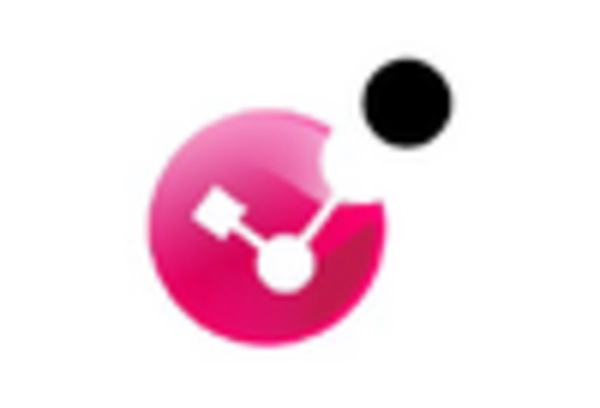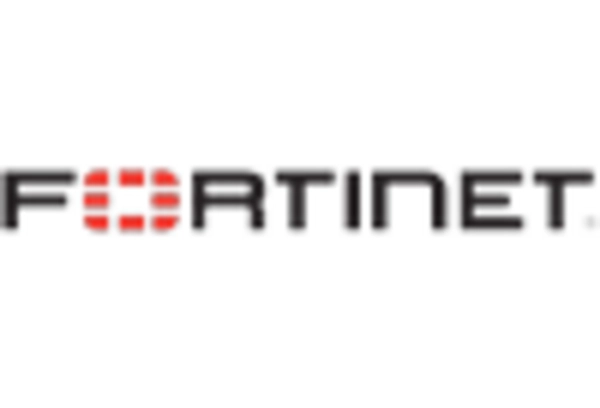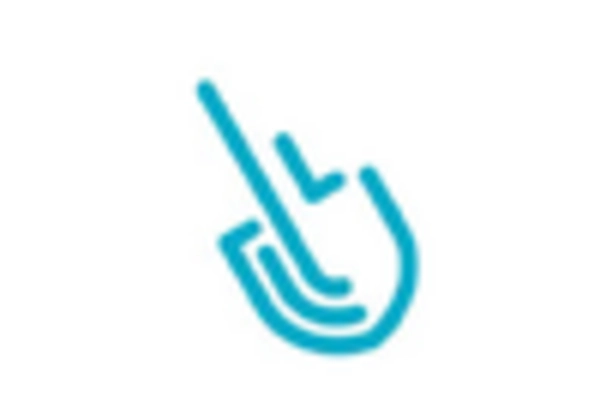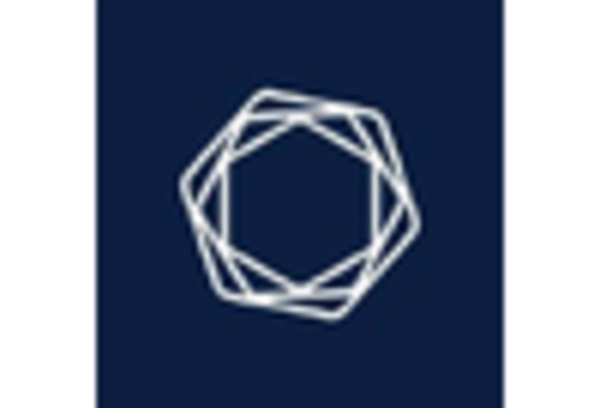Rising Cybersecurity Threats
The container security market is experiencing heightened demand due to the increasing frequency and sophistication of cyber threats. Organizations in the GCC are recognizing the necessity of robust security measures to protect their containerized applications. In 2025, it is estimated that cyberattacks targeting container environments could rise by over 30%. This alarming trend compels businesses to invest in advanced security solutions, thereby driving growth in the container security market. The need for comprehensive security frameworks that can address vulnerabilities in container orchestration platforms is becoming paramount. As a result, companies are prioritizing investments in security tools that can effectively mitigate risks associated with container deployments.
Regulatory Compliance Requirements
The container security market is significantly influenced by stringent regulatory compliance requirements across various sectors in the GCC. Governments and regulatory bodies are increasingly mandating organizations to adhere to specific security standards to protect sensitive data. For instance, compliance with regulations such as the GDPR and local data protection laws necessitates the implementation of robust security measures for containerized applications. As organizations strive to meet these compliance mandates, the demand for container security solutions is expected to grow. In 2025, it is projected that compliance-related investments in the container security market could account for approximately 25% of total market expenditure, highlighting the critical role of regulatory frameworks in shaping security strategies.
Adoption of Cloud-Native Technologies
The container security market is witnessing a surge in demand driven by the widespread adoption of cloud-native technologies among GCC enterprises. As organizations migrate to cloud environments, the need for effective security solutions tailored for containerized applications becomes increasingly apparent. In 2025, the market for cloud-native security solutions is anticipated to grow by 40%, reflecting the shift towards containerization. This transition necessitates the implementation of security measures that can seamlessly integrate with cloud platforms. Consequently, businesses are investing in container security solutions that provide visibility and control over their cloud-native applications, thereby propelling growth in the container security market.
Growing Demand for DevSecOps Practices
The container security market is experiencing a notable shift towards the adoption of DevSecOps practices within organizations in the GCC. This approach emphasizes the integration of security into the development and operations processes, ensuring that security is a fundamental aspect of the software development lifecycle. As organizations recognize the importance of embedding security measures early in the development process, the demand for container security solutions is expected to rise. In 2025, it is projected that investments in DevSecOps tools and practices will account for approximately 30% of total security spending, underscoring the critical role of security in containerized environments.
Increased Investment in Digital Transformation
The container security market is benefiting from the rising investment in digital transformation initiatives across the GCC. Organizations are increasingly adopting containerization as part of their digital strategies to enhance operational efficiency and agility. This shift towards digitalization is accompanied by a growing awareness of the security implications associated with containerized environments. In 2025, it is estimated that digital transformation spending in the region will exceed $20 billion, with a significant portion allocated to security solutions. As businesses prioritize securing their digital assets, the container security market is poised for substantial growth, driven by the need for comprehensive security frameworks that can protect containerized applications.

















Leave a Comment